第67章 5(4)
These, then, are the reasons why the number of ova in the sea-urchin is an odd one, and why that odd number is five. In some sea-urchins the ova are excessively small, in others of considerable size, the explanation being that the latter are of a warmer constitution, and so are able to concoct their food more thoroughly; while in the former concoction is less perfect, so that the stomach is found full of residual matter, while the ova are small and uneatable. Those of a warmer constitution are, moreover, in virtue of their warmth more given to motion, so that they make expeditions in search of food, instead of remaining stationary like the rest. As evidence of this, it will be found that they always have something or other sticking to their spines, as though they moved much about; for they use their spines as feet.
The Ascidians differ but slightly from plants, and yet have more of an animal nature than the sponges, which are virtually plants and nothing more. For nature passes from lifeless objects to animals in such unbroken sequence, interposing between them beings which live and yet are not animals, that scarcely any difference seems to exist between two neighbouring groups owing to their close proximity.
A sponge, then, as already said, in these respects completely resembles a plant, that throughout its life it is attached to a rock, and that when separated from this it dies. Slightly different from the sponges are the so-called Holothurias and the sea-lungs, as also sundry other sea-animals that resemble them. For these are free and unattached. Yet they have no feeling, and their life is simply that of a plant separated from the ground. For even among land-plants there are some that are independent of the soil, and that spring up and grow, either upon other plants, or even entirely free. Such, for example, is the plant which is found on Parnassus, and which some call the Epipetrum. This you may hang up on a peg and it will yet live for a considerable time. Sometimes it is a matter of doubt whether a given organism should be classed with plants or with animals. The Ascidians, for instance, and the like so far resemble plants as that they never live free and unattached, but, on the other hand, inasmuch as they have a certain flesh-like substance, they must be supposed to possess some degree of sensibility.
An Ascidian has a body divided by a single septum and with two orifices, one where it takes in the fluid matter that ministers to its nutrition, the other where it discharges the surplus of unused juice, for it has no visible residual substance, such as have the other Testacea. This is itself a very strong justification for considering an Ascidian, and anything else there may be among animals that resembles it, to be of a vegetable character; for plants also never have any residuum. Across the middle of the body of these Ascidians there runs a thin transverse partition, and here it is that we may reasonably suppose the part on which life depends to be situated.
The Acalephae, or Sea-nettles, as they are variously called, are not Testacea at all, but lie outside the recognized groups. Their constitution, like that of the Ascidians, approximates them on one side to plants, on the other to animals. For seeing that some of them can detach themselves and can fasten upon their food, and that they are sensible of objects which come in contact with them, they must be considered to have an animal nature. The like conclusion follows from their using the asperity of their bodies as a protection against their enemies. But, on the other hand, they are closely allied to plants, firstly by the imperfection of their structure, secondly by their being able to attach themselves to the rocks, which they do with great rapidity, and lastly by their having no visible residuum notwithstanding that they possess a mouth.
Very similar again to the Acalephae are the Starfishes. For these also fasten on their prey, and suck out its juices, and thus destroy a vast number of oysters. At the same time they present a certain resemblance to such of the animals we have described as the Cephalopoda and Crustacea, inasmuch as they are free and unattached.
The same may also be said of the Testacea.